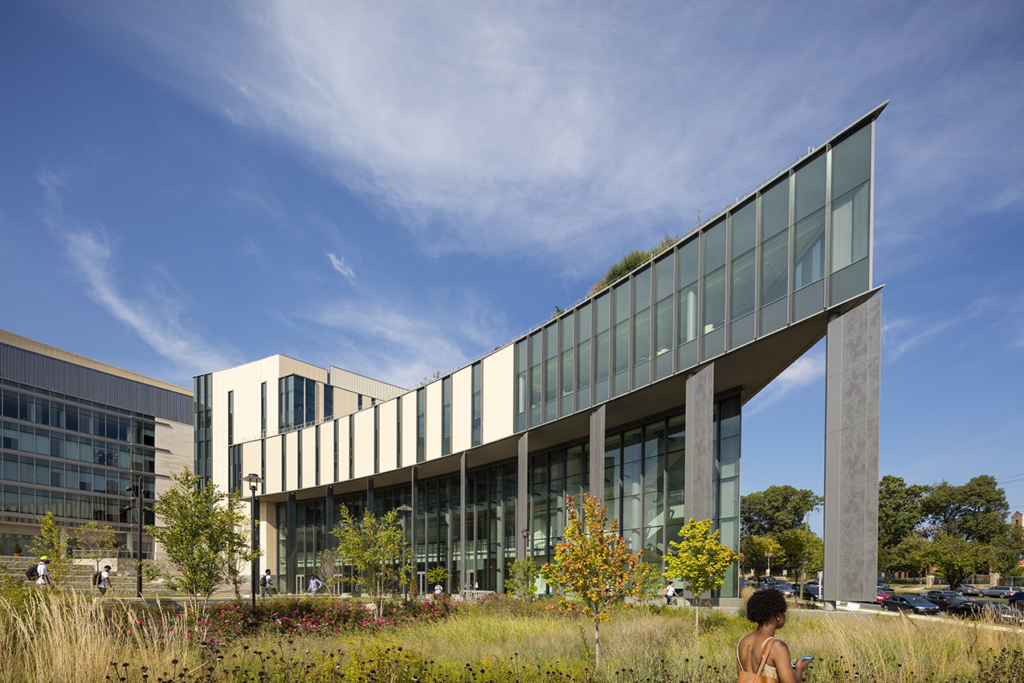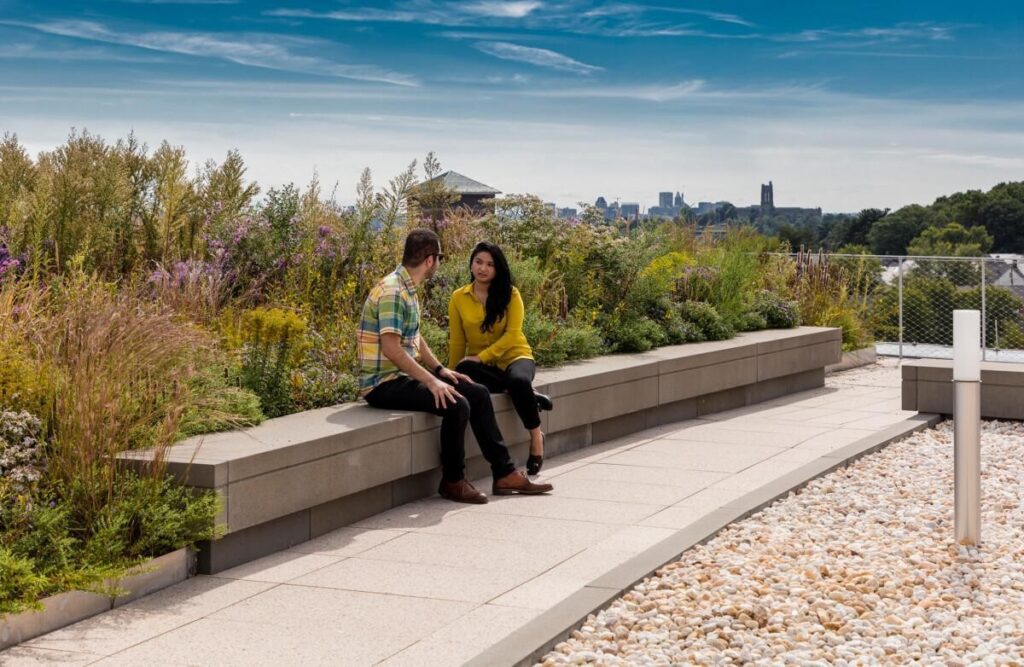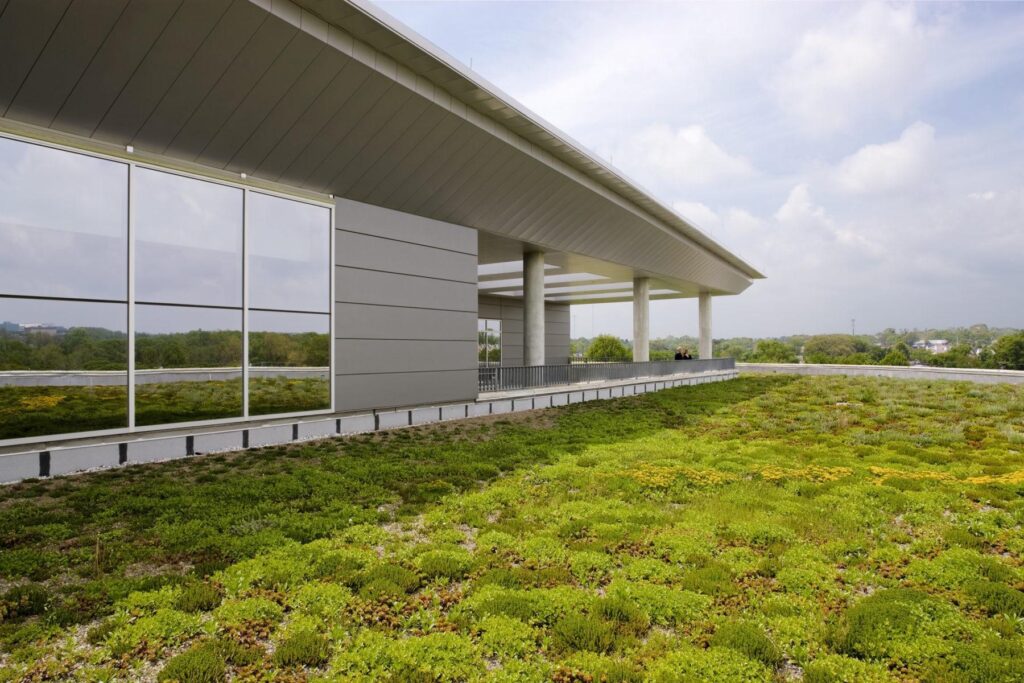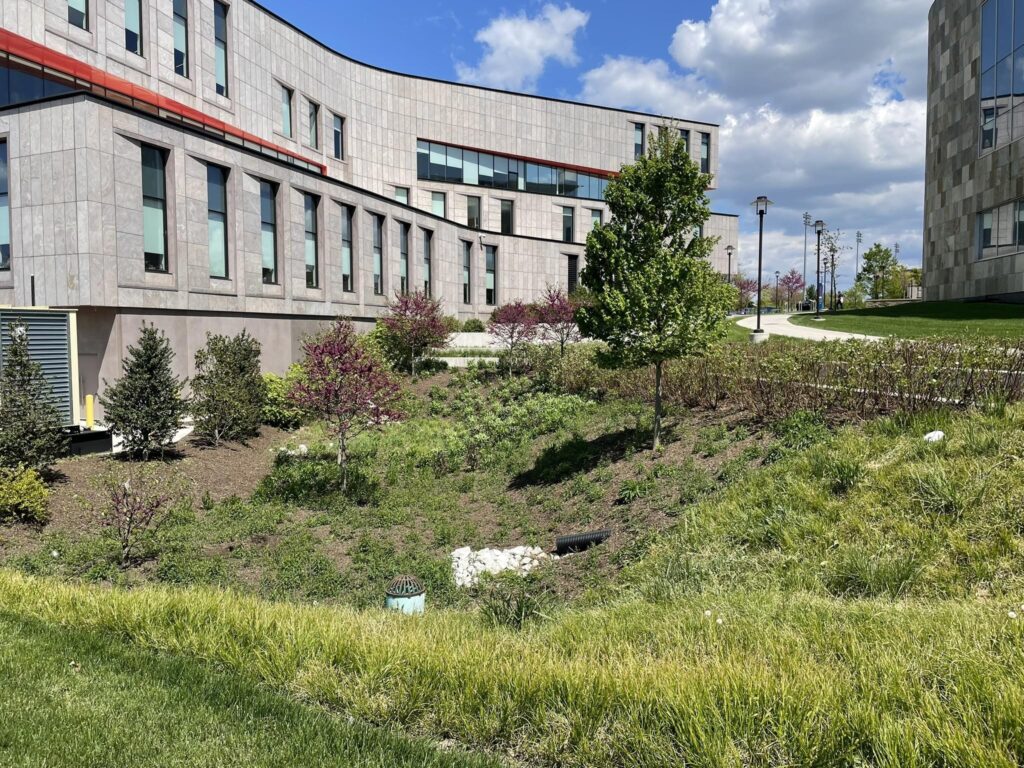The Center for the Built Environment and Infrastructure Studies was an innovative marvel of green design when it debuted in 2012, and a decade later we are recapturing that success. In stunning neoclassical style, the Calvin & Tina Tyler Hall is doubling down on Morgan State University’s commitment to fostering sustainability and resilience.

An Impactful Dedication
In 1963 Calvin Tyler dropped out of what was then called Morgan State College to pursue his career as one of the first UPS drivers in Baltimore. After quickly rising through the ranks he transferred all his skills into management roles and eventually became the vice president for U.S. operations. Nearly six decades after his departure from academia, Calvin and his wife, Tina Tyler, have been contributing over twenty million dollars to supporting education since 2002, and are now immortalized at the heart of Morgan’s campus.

Now as the public passes the corner of Hillen Road & Cold Spring Lane, they will witness numerous stormwater management, sediment control, and water quality devices firsthand. It is those stormwater management practices that have awarded us another Leadership in Energy and Environmental Design gold certification, that we wish to highlight in detail today. Our new edition serves us well, not just as a colorful aesthetic set piece, but to further aim for an environmentally friendly future.
Green Design Showcase: Vegetative Roof
The extensive vegetative roof at Calvin & Tina Tyler Hall is a stunning showcase of eco-friendly innovation, demonstrating the benefits of green infrastructure in an urban setting. This extensive vegetative roof offers a unique alternative by incorporating native plant species into its design. These native plants enhance air quality by capturing airborne pollutants and releasing oxygen. Additionally, the lush vegetation contributes to sound absorption, creating a quieter and more serene environment both inside and outside the building.
By covering the roof with vegetation, the building increases heat absorption and helps combat the urban heat island effect. This natural insulation minimizes the need for artificial heating and cooling, leading to lower energy costs and a smaller carbon footprint. However, one of the most important benefits of this extensive roof system is its ability to manage stormwater runoff. The vegetation and soil act as a natural sponge, absorbing rainwater and reducing the volume of runoff entering the drainage system. This not only mitigates the risk of flooding but the use of this practice ensures that Morgan’s own stormwater management effectively contributes to reducing the burden on Baltimore’s municipal infrastructure, fostering a more resilient campus environment.

Green Design Showcase: Micro-Bioretention & Rain Garden
Micro-bioretentions and rain gardens are essential elements of Tyler Hall’s sustainable design, showcasing the building’s commitment to eco-friendly practices while enhancing its visual appeal.
A micro-bioretention is a compact, landscaped feature designed to capture and treat stormwater runoff. It consists of a shallow depression filled with soil, mulch, and native vegetation that works to filter and infiltrate stormwater. As the water flows through this system, contaminants like sediment, heavy metals, and hydrocarbons are captured and broken down by the plant roots and soil microbes, reducing the pollution load before the water is released back into the environment. A key distinction between micro-bioretentions and rain gardens is that micro-bioretentions often include perforated pipes at the bottom, allowing excess stormwater to be redirected into Baltimore’s drainage system when infiltration capacity is met.

Rain gardens, on the other hand, focus more on the aesthetic aspect while still providing effective stormwater management. Unlike the structured appearance of micro-bioretentions, rain gardens feature a diverse array of native plants and grasses in a more open and natural setting. They are designed to absorb and filter stormwater from rooftops, sidewalks, and parking lots.
At Morgan State, micro-bioretentions and rain gardens are prominently placed around Tyler Hall to complement the building’s architecture while serving an ecological purpose. Visitors can easily spot these features as they approach the building, with lush vegetation and carefully designed landscape areas. The majority of the micro-bioretentions and rain gardens are located on the north facade of the building. However, micro-bioretention and rain gardens are strategically placed throughout the Tyler Hall vicinity, contributing significantly to both stormwater management and the building’s aesthetic appeal.
Together, micro-bioretentions and rain gardens around Tyler Hall serve a dual purpose: they offer a visually pleasing addition to the campus landscape, while also playing a vital role in protecting Herring Run.
Conclusion
Morgan has been rapidly expanding its campus grounds and will continue to do so in the coming years. And like all rapid developments, it is easy to get lost in the ambition of the now. However, we are treating our new installations as an opportunity to advocate for the future. Although MSU has a variety of new developments located around the campus, Calvin & Tina Tyler Hall sets a powerful example for other educational institutions seeking to prioritize environmental sustainability.

